I'm trying to design the matching network between an antenna and its transmitter, running at 868MHz, as shown below. There's probably about 20mm between the transmitter output and the Pi network.
When connecting the VNA to the PCB in order to measure the impedance, where should the VNA be connected? At the transmitter end, or at the start of the Pi network?
My understanding was that in order for the VNA to "see" the load how the transmitter sees it, the VNA should ideally be connected close to the output of the transmitter (in my case, I have a blank PCB, so I've soldered a UFL connector directly on the transmitter output pad). However, after reading this article by Tektronix, it states the following:
it’s important to keep in mind that the impedance to be matched must be measured at the point where the matching network will be placed.
I understood this to mean that I should solder the UFL connector close to C13 in the image above (and possible cut the trace between the transmitter and the UFL connector).
